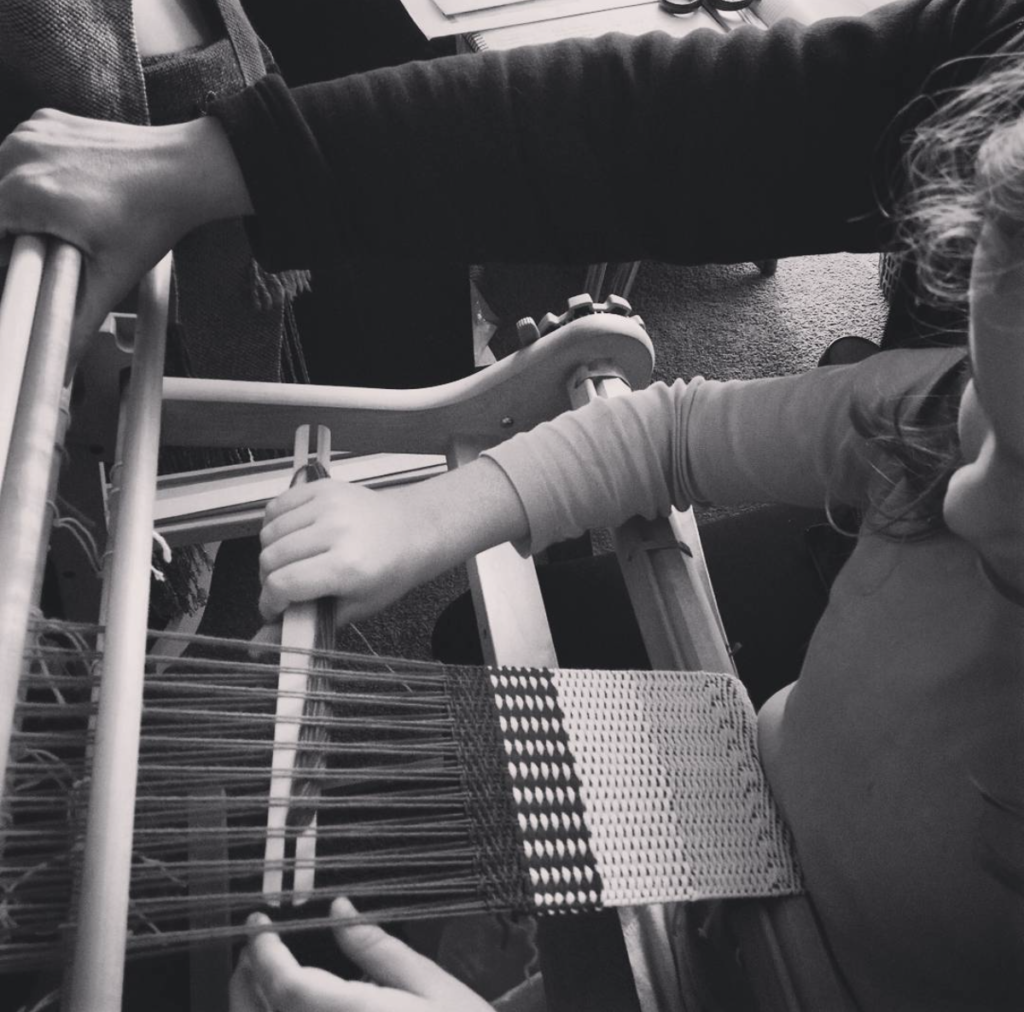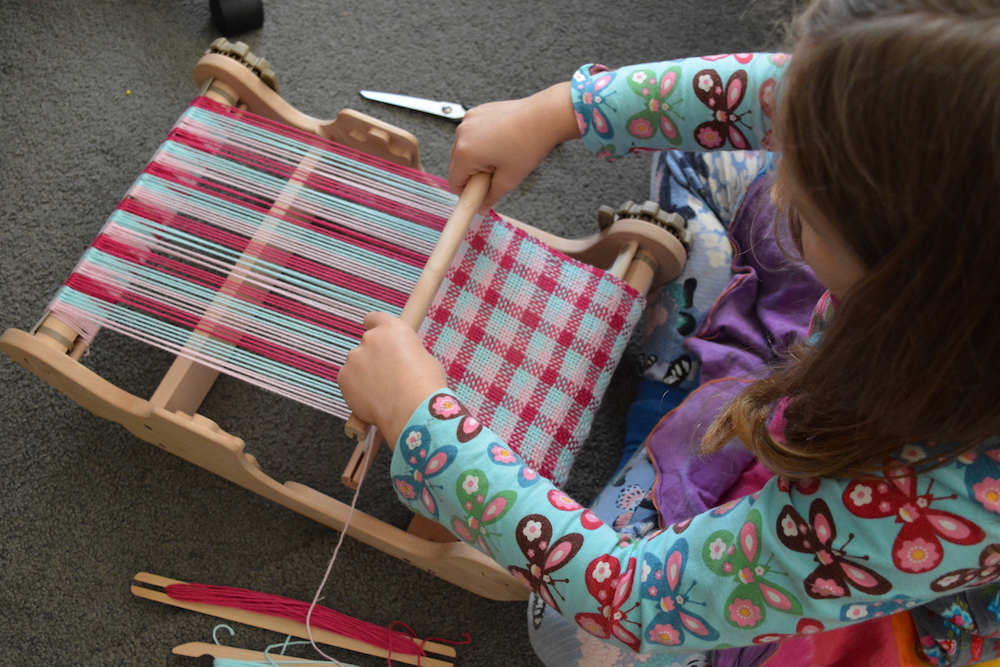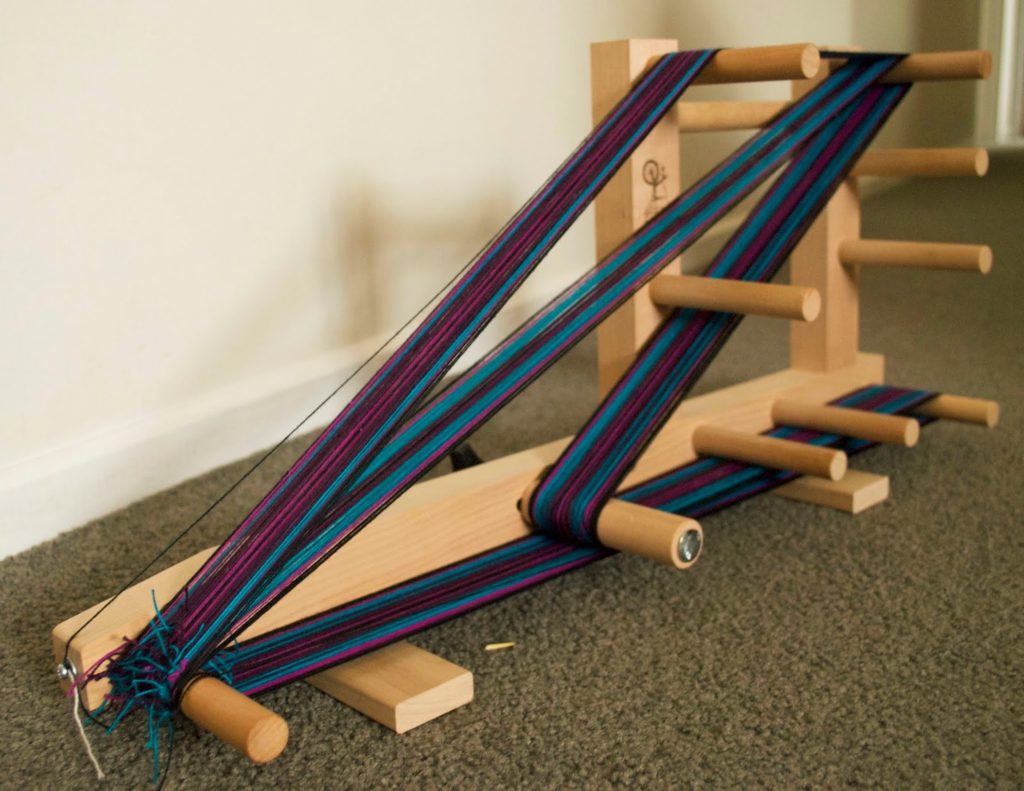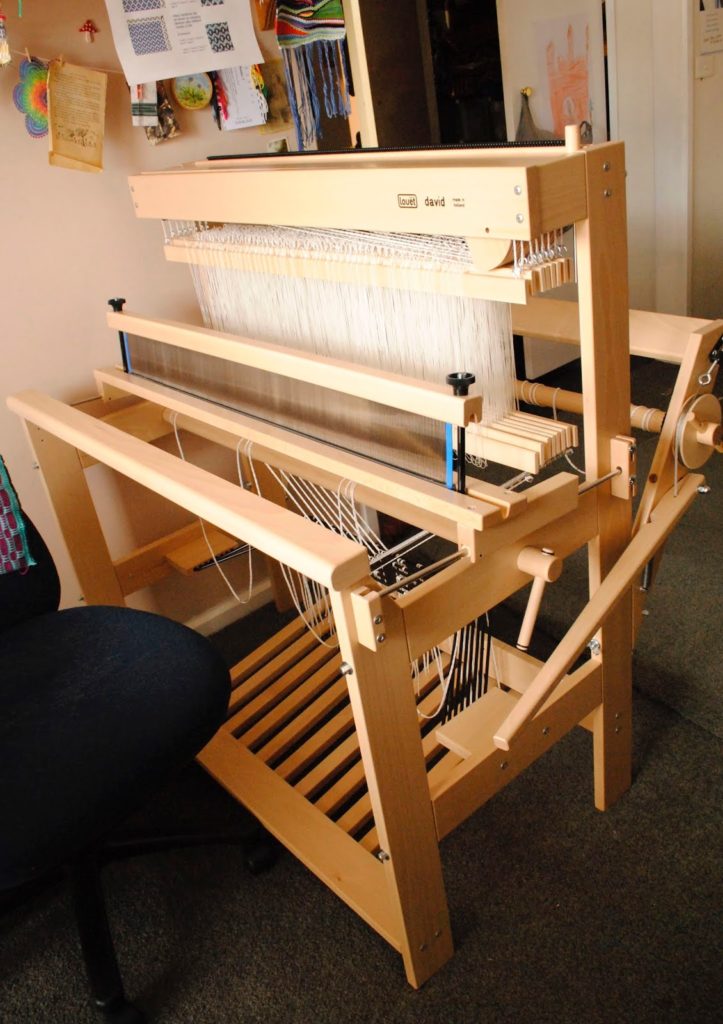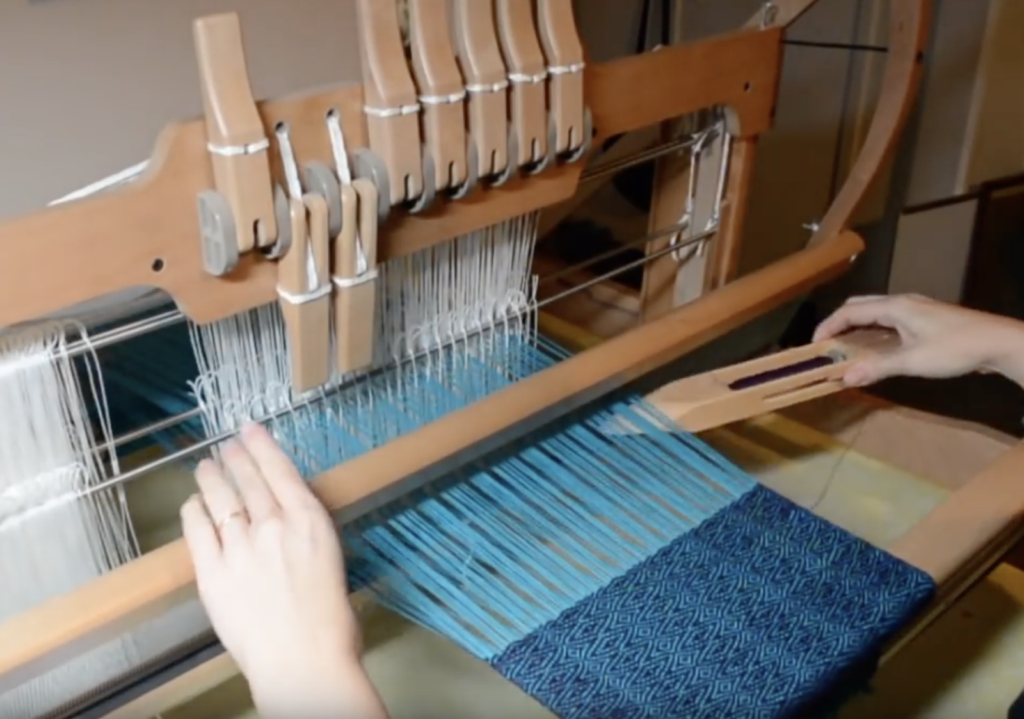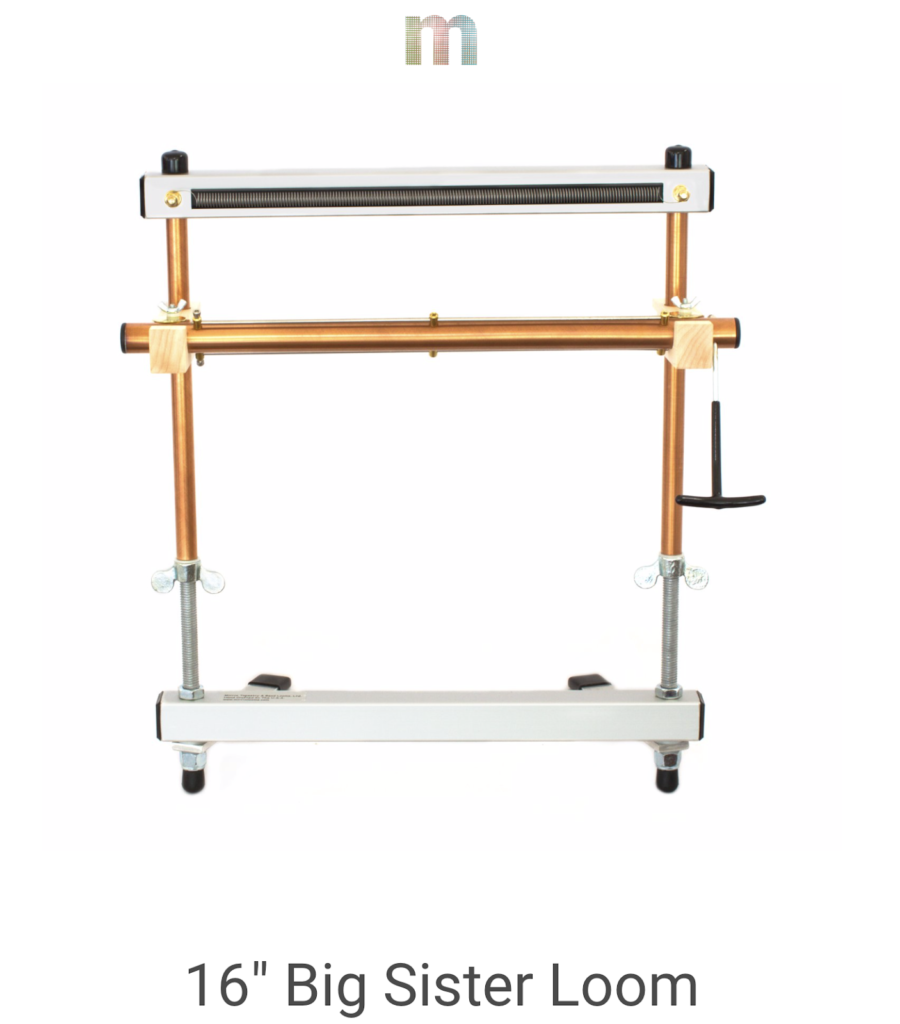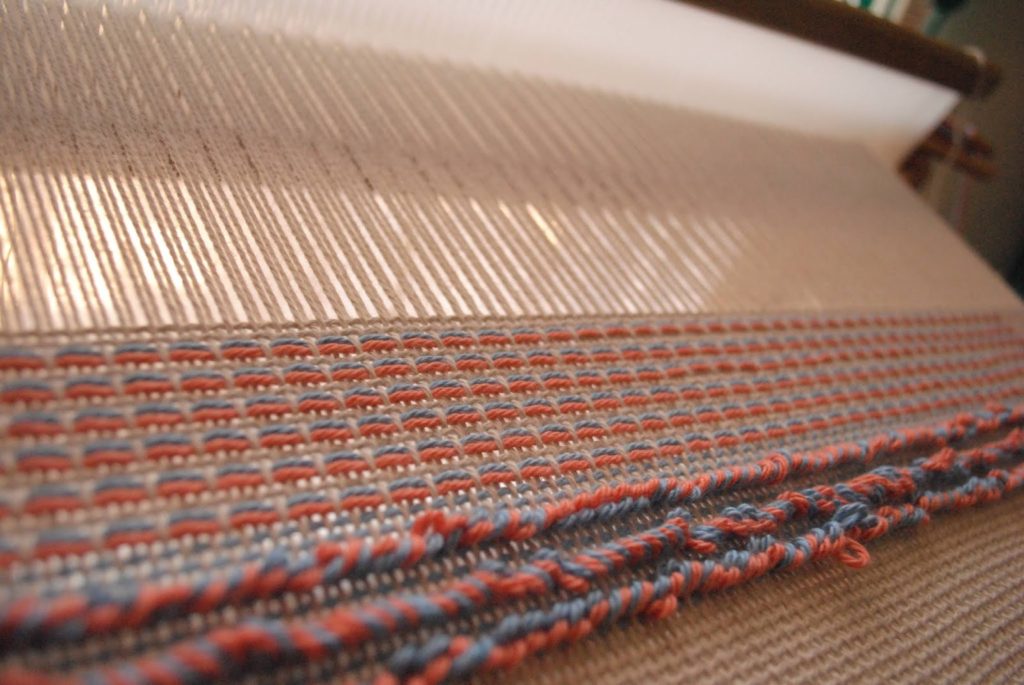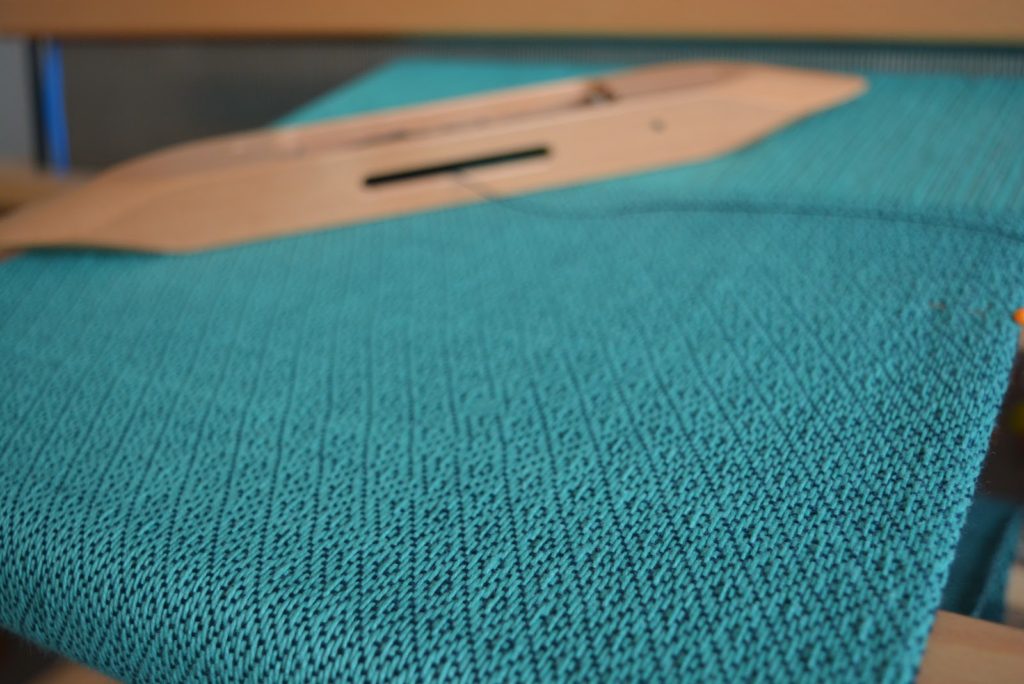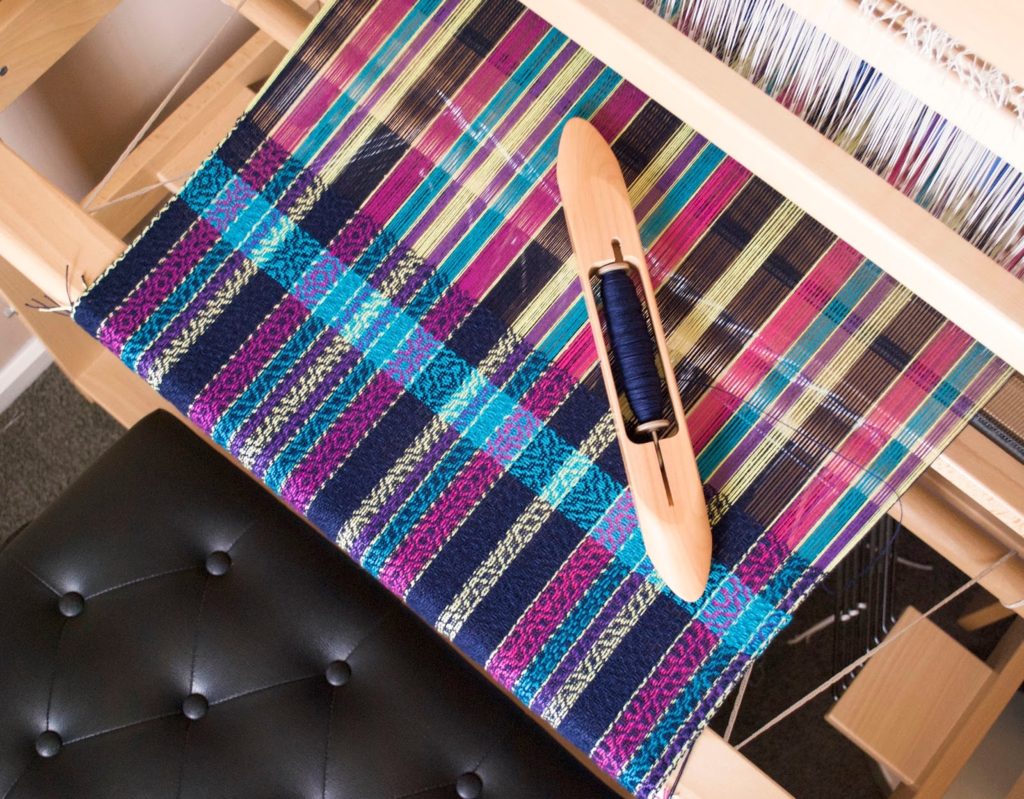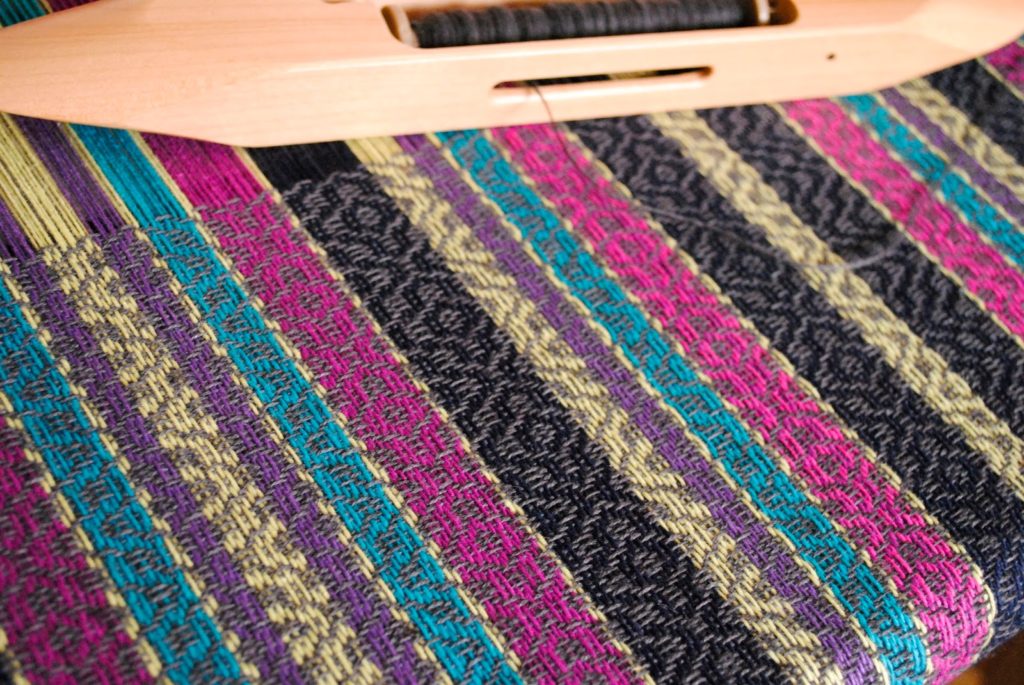Most modern weavers know that a rigid heddle loom can be set up in various ways to achieve extra shafts, making it possible to weave 3, 4 or more shafts on this fairly simple loom.
Some of the options include the introduction of additional heddles, heddle rods and/or pick up sticks to create the extra desired shafts. This allows many rigid heddle weavers to achieve weave structures that are usually woven with a table loom or floor loom.
Adding the extra shafts can sometimes create additional problems for the weaver though. Some weavers may find the repetitious action of lifting a heddle rod that is situated behind the main heddle/heddles will activate or exacerbate neck, shoulder or back problems (🙋♀️).
Some weavers may find that using multiple heddles is difficult if for any reason your fine motor skills are challenged. It is this particular problem that today’s Ask Kelly question specifically relates to:
“I did love this class, and I really love this pattern; however, it was very hard on my arthritic hands. I ended up only making it about 15 inches, and that was over 3 days. I’ve done a couple of your projects with heddle rods and have really liked them, but I guess 3 was over the top for me. I’m considering a floor loom, as I’m loving the more intricate patterns. TBH, that intimidates me a LOT. If money and space are not an issue (I am fortunate that they aren’t), is there an advantage to the table loom over the floor loom? It seems far less intimidating to me. My daughter tells me that I should go straight to the floor loom, one reason being that sheds can be just as messy on a table loom as they are on my RHL, so why bother. I don’t know if that’s true. I’d appreciate any feedback you can offer.”
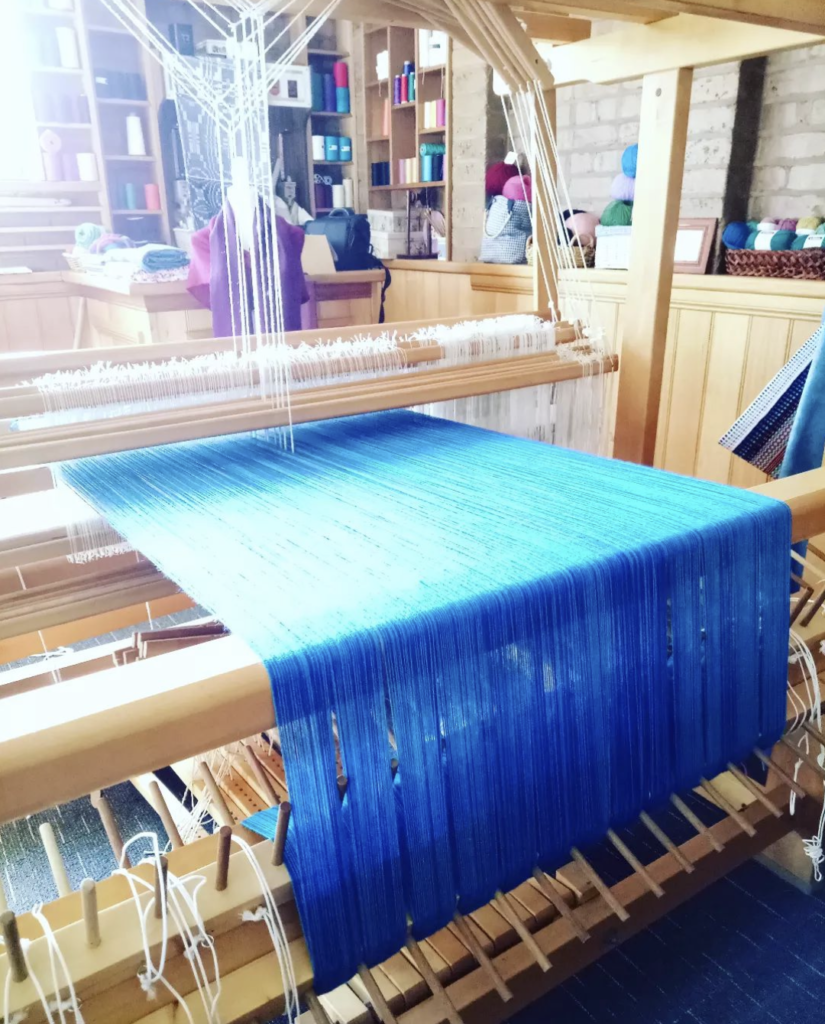
I’ve been thinking over your question – it’s a very good one but a real “can of worms” question! 😆
There is a lot to consider here. You’ve eliminated the cost and space issue, which is great, I don’t need to discuss that further here.
What springs to my mind first when thinking about a floor loom is age and ability. Now, I firmly believe that you can do anything at any age, but I also know from first hand experience and speaking to so many other weavers that our own willingness and desire to do something doesn’t always match what our bodies will let us do!
So, my next question for you would be, how are you physically? A table loom can be a strain on your neck and shoulders due to operating the levers. A floor loom can be a strain on your back due to doing tie ups and operating treadles with your feet, also possibly from stretching to throw the shuttle, depending on how wide your loom is.
Personally, I enjoy weaving on a floor loom way more than a table loom because I love the speed you can achieve by using your whole body to operate different parts (like driving a car, I guess). But I have to be careful about my back and make sure I take regular breaks and don’t weave for too long.
I have seen some weavers who are more advanced in years upgrade their regular floor looms to an AVL or similar. If you don’t know anything about that, it’s relying more on electronics so that you do less of the “heavy lifting”.
It’s a great way for older weavers to be able to continue weaving for longer. Very expensive looms though, and some may not like the idea of electronics being involved. As I said, there is a lot to consider, but if you have any more specific questions, let me know.
Do your research and take your time making a decision. If there is any way you can try out a table or floor loom before purchase, that would be invaluable to help you make your decision.
All the best in choosing the right loom for you!
*This post contains affiliate links. For further information, please see my disclosure policy.
Until next time…
Happy Weaving!

